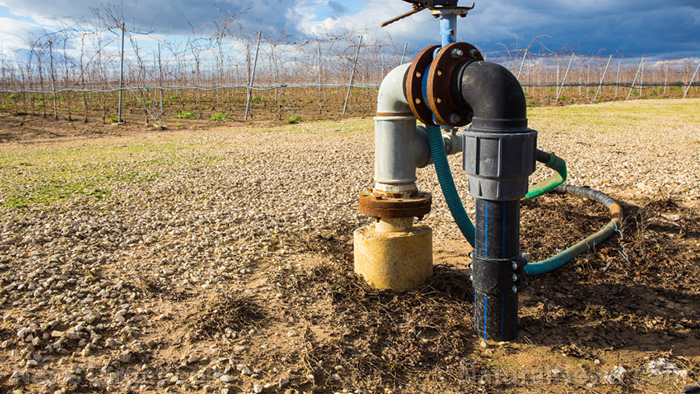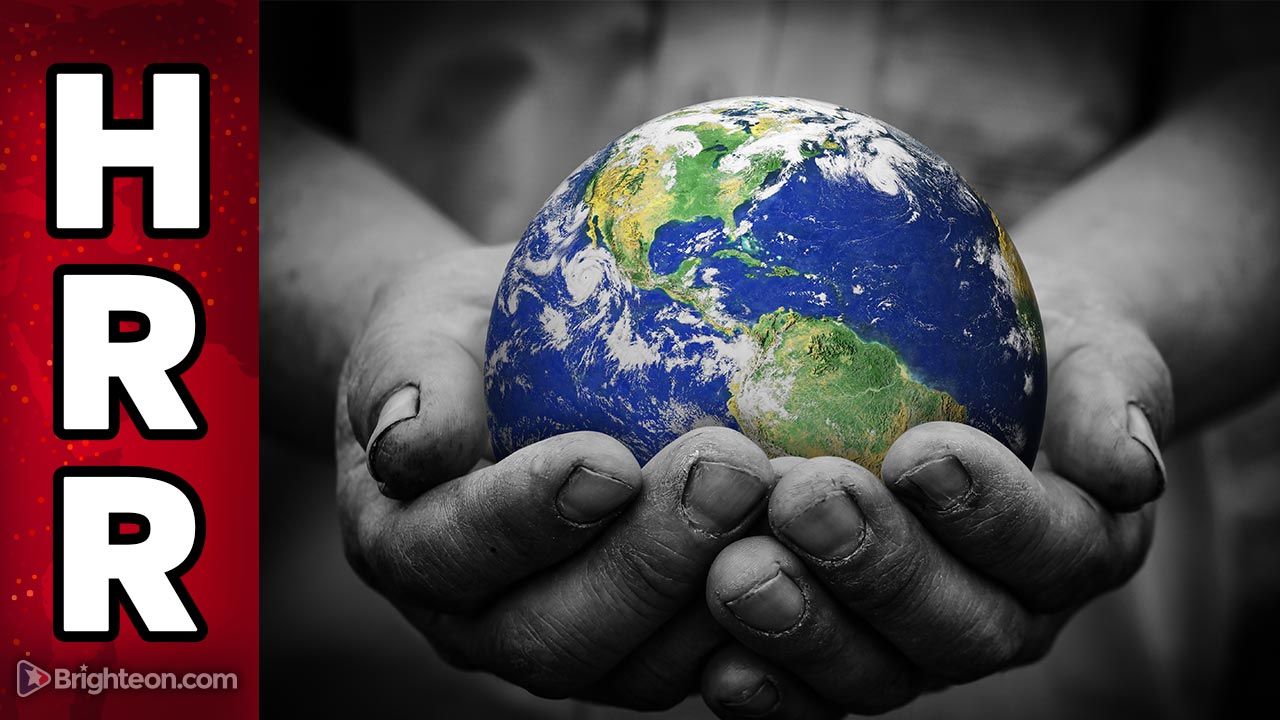White House announces devastating water cuts for Arizona and Nevada while making sure California keeps its current allotment
08/18/2022 / By Belle Carter

The Biden administration announced on Tuesday that it is set to further impose water cuts in Arizona and Nevada for the second year in a row amid the drought afflicting the southwestern United States.
The bulletin was sent out as Lake Mead and Lake Powell, the country’s largest water reservoirs, are barely above one-quarter of their capacity. As water levels continue to recede, these bodies of water will stop generating power and threaten the availability of clean water to some 40 million Americans.
The shortage in the Lower Colorado River Basin was raised to Tier 2a, which means increased water cuts will be put in place. Arizona will receive 21 percent less and Nevada eight percent at the beginning of 2023. This is the first time the lake has been pushed to that designation.
“Every sector in every state has a responsibility to ensure that water is used with maximum efficiency. In order to avoid a catastrophic collapse of the Colorado River System and a future of uncertainty and conflict, water use in the Basin must be reduced,” the Department of the Interior (DOI) Assistant Secretary for Water and Science Tanya Trujillo said in a statement.
Bureau of Reclamation chief Camille Touton had earlier given the Colorado River stakeholders until August 15 to come up with a plan that would reduce water usage by 25 percent. The deadline has already passed.
Last year, DOI declared the first Colorado River water shortage (Tier 1) but the past 12 months did not bring enough rain and snow. Lake Mead’s water level is expected to be at 1,048 feet by January 1, 2023, while Lake Powell will likely be at 3,522 feet. As of now, the former is just at 27 percent capacity, which is its lowest level since it was first filled up in 1937.
Analysts are concerned that the mandatory cuts may not be enough to revive the river in the face of the “climate change-driven drought.”
“We thought we were good, but the last few years have been so dry that we realized those tier reductions weren’t enough and aren’t enough,” Bill Hasencamp, Colorado River resources manager with the Metropolitan Water District of Southern California, told CNN.
He added that the two things they focused on were how to get through the next three years without the system crashing and how to develop a long-term plan to sustain the river.
Water wars between states and stakeholders loom
The order for additional cuts is giving birth to conflicts between the states and other stakeholders.
“It is unacceptable for Arizona to continue to carry a disproportionate burden of reductions for the benefit of others who have not contributed,” Ted Cooke, general manager of the Central Arizona Project, said in a statement.
The state governments and water agencies are still in the middle of negotiations on how to cut down water use drastically by two to four million acre-feet. According to sources, some participants have at times grown tense and acrimonious, the parties have yet to reach an agreement and Touton has yet to specify if any new deadlines would be set as the initial deadline has passed.
The absence of a deal now heightens the risk that the Colorado River crisis could spiral into a legal morass.
Some observers worry the talks could fail as they see growing potential for federal intervention, lawsuits and court battles. (Related: WATER WARS are about to erupt in America as dwindling supplies lead to legal clashes among western states.)
“There are a lot of different interests at loggerheads. And there’s a lot to overcome, and there’s a lot of animosities,” Great Basin Water Network Executive Director Kyle Roerink said.
Those involved in the negotiations would not publicly discuss the offers but according to them, there have been difficult discussions between the states and urban and agricultural water districts. There were also talks that there are growing tensions between the states of the river’s lower basin, which includes California, Arizona and Nevada, and those of the upper basin, which consists of Colorado, Wyoming, New Mexico and Utah.
“It’s going to be a mess and I do not see how we ever get over some of what I believe are irreconcilable differences among the states,” Roerink said.
For Daryl Vigil, co-founder of Water Tribes Initiative, the stakeholders need a collective vision for the basin, not competing management. His team communicates with the basin’s 30 sovereign tribes who hold some of the most senior water rights on the river.
“We have such an opportunity to do something different, but how can we provide support to do the right thing when there is no formal place for tribal leaders to engage in negotiations?” he lamented.
Meanwhile, John Entsminger, general manager of the Southern Nevada Water Authority, said in a letter addressed to DOI that there is an “absence of political will to forge collective action,” saying that missing the federal government’s deadline is “doing a disservice” to everyone who relies on the Colorado River.
He also denounced water users focusing on the prices that would be paid for each acre-foot of conserved water to growers and other water users.
Visit WaterWars.news for more updates on the low water levels of the Colorado River.
Watch the following video that talks about manufactured drought to cause food shortages and climate totalitarianism.
This video is from the Planet Zedta channel on Brighteon.com.
More related stories:
Federal government to make major cuts in water deliveries to Western states.
Colorado River water levels too low; major water cutbacks imminent.
Colorado, Nebraska fight over 99-year-old water-sharing compact.
Sources include:
Submit a correction >>
Tagged Under:
big government, chaos, clean water, climate, Colorado River, drought, environment, Lake Mead, Lake Powell, panic, rationing, scarcity, water cuts, water reservoir, water shortage, water supply, Water Wars, world agriculture
This article may contain statements that reflect the opinion of the author
RECENT NEWS & ARTICLES
COPYRIGHT © 2017 HARVEST NEWS




















